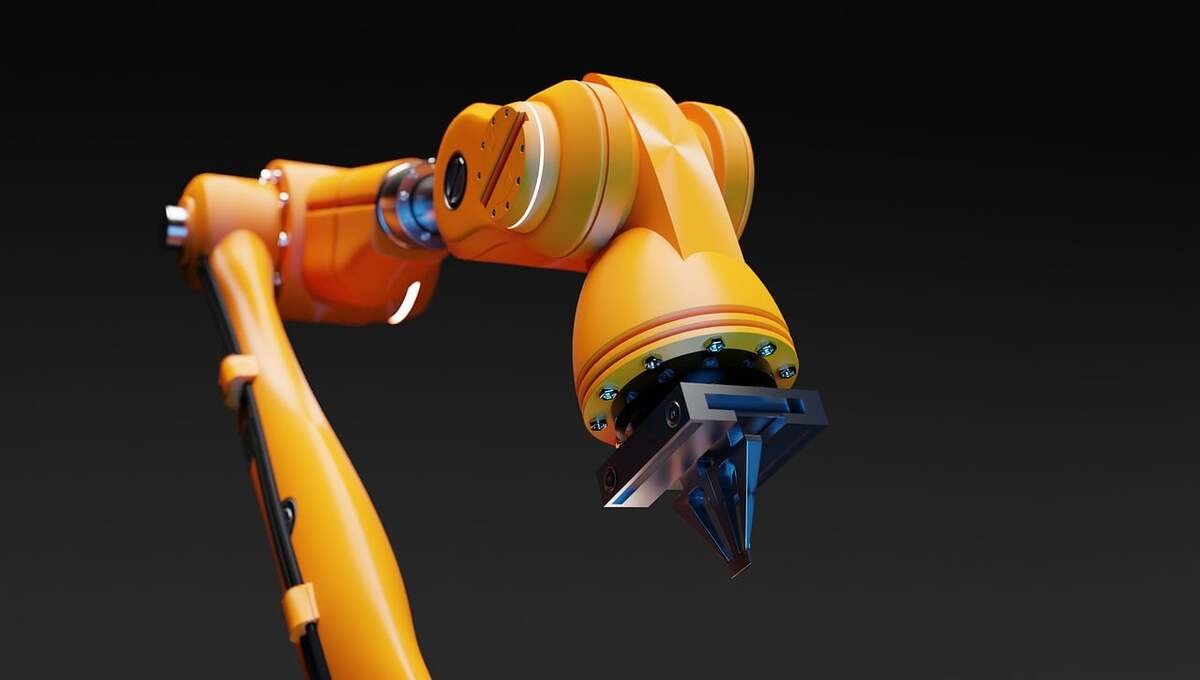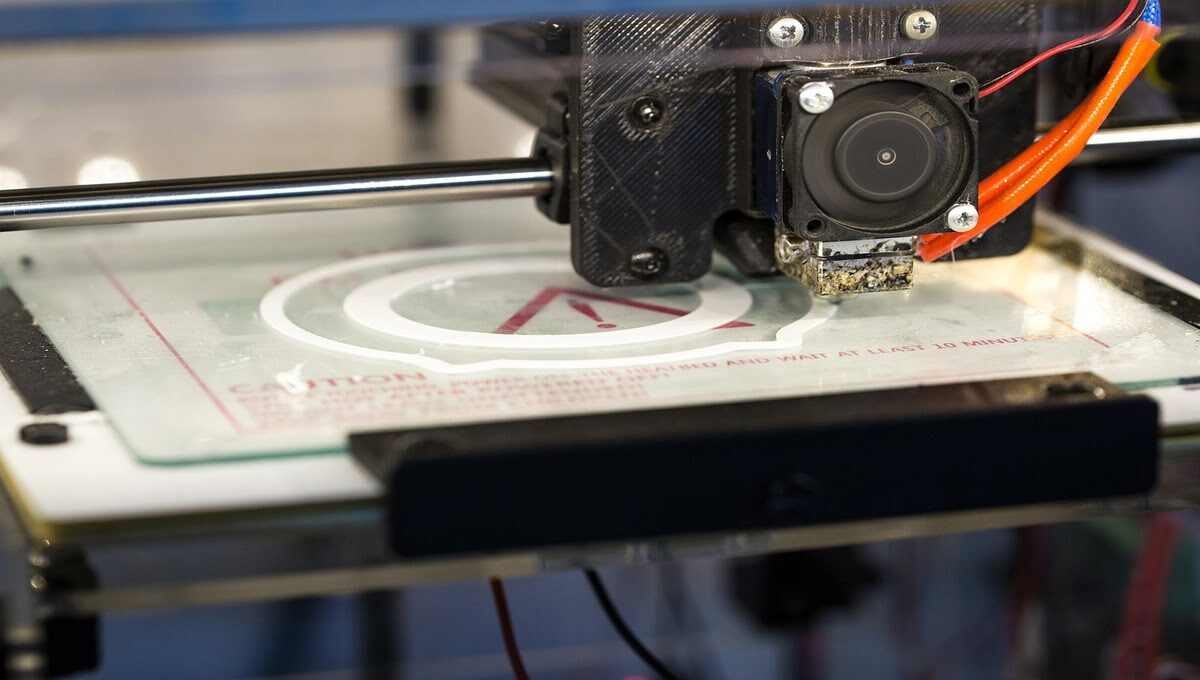Future
AGM Batteries: The Next Generation of Energy Storage

batteries are crucial in powering various devices, from small gadgets to large-scale industrial applications. One type of battery that has gained popularity in recent years is the AGM battery. AGM stands for Absorbent Glass Mat, which refers to a specific design and construction of a lead-acid battery. This article will explore what AGM batteries are, how they work, their advantages, and their applications.
1. Introduction
In this digital age, where portable electronics and renewable energy systems are ubiquitous, having a reliable and efficient power source is essential. AGM batteries have become popular due to their unique design and superior performance. This article will delve into the world of AGM batteries and uncover their secrets.
2. Understanding AGM Batteries
AGM batteries are a form of valve-regulated lead-acid battery (VRLA). They are called “absorbent glass mat” batteries because they use a fiberglass mat separator to hold the electrolyte solution in place. The mat is saturated with electrolyte, which ensures that the battery is spill-proof and resistant to vibration.
3. How Does an AGM Battery Work?
- AGM batteries operate on the same basic principle as lead-acid batteries but with a few key differences in their construction. Inside an AGM battery, you’ll find a series of lead plates immersed in an electrolyte solution consisting of sulfuric acid and water. However, the key differentiating factor is the glass mat separator.
- The glass mat separator in an AGM battery absorbs and holds the electrolyte solution, essentially acting as a sponge. This design prevents the electrolyte from freely sloshing around and provides a stable environment for chemical reactions. The absorbed electrolyte facilitates the movement of ions between the positive and negative plates, allowing for the flow of electric current.
- As electrical energy is discharged from the battery, the chemical reactions convert the stored chemical energy into electrical energy, powering the connected device or system. When the battery is recharged, the chemical reactions are reversed, restoring the chemical energy within the battery.
4. Advantages and disadvantages of AGM Batteries
| Advantages of AGM Batteries | Disadvantages of AGM Batteries |
|---|---|
| Maintenance-Free: | Higher Cost: |
| AGM batteries are sealed and do not require | AGM batteries tend to be more expensive than |
| periodic maintenance like adding water to the cells. | traditional flooded lead-acid batteries due to |
| This makes them hassle-free and convenient to use. | their advanced construction and technology. |
| Deep Cycle Capability: | Limited Deep Discharge: |
| AGM batteries are designed for deep cycling, | Although AGM batteries are designed for deep |
| meaning they can withstand repetitive discharging | cycling, continuous deep discharges can reduce |
| and recharging cycles without suffering significant | their lifespan and overall performance. |
| capacity loss. | |
| Spill-Proof Design: | Temperature Sensitivity: |
| The sealed construction of AGM batteries ensures | AGM batteries may experience reduced performance |
| that they are spill-proof, eliminating the risk of | in extreme temperatures, both hot and cold, |
| acid leakage and making them safe to use in | compared to some other battery types. |
| various orientations. | |
| Vibration and Shock Resistance: | |
| AGM batteries are highly resistant to vibration | |
| and shock, making them suitable for applications | |
| in rugged environments and off-road vehicles. | |
| Fast Charging: | |
| AGM batteries have low internal resistance, | |
| allowing them to accept high charging currents | |
| and enabling faster charging times compared to | |
| flooded batteries. | |
| Versatility: | |
| AGM batteries are versatile and can be used in | |
| a wide range of applications, including marine, | |
| RVs, renewable energy systems, backup power, and | |
5. Applications of AGM Batteries

AGM batteries find applications in various industries and sectors. Their unique characteristics make them suitable for a wide range of uses, including:
- Automotive: AGM batteries are commonly used in vehicles with start-stop systems, high-demand electrical systems, and those requiring deep cycling capabilities.
- Marine: AGM batteries are ideal for marine applications due to their resistance to vibration, shock, and acid leakage, making them suitable for boats and yachts.
- Recreational Vehicles (RVs): AGM batteries provide reliable power for RVs, supplying electricity for appliances, lights, and other onboard systems.
- Renewable Energy Systems: AGM batteries serve as energy storage solutions in solar power systems, wind turbines, and other renewable energy installations.
- Backup Power: AGM batteries are used in backup power systems to provide reliable power during outages or when the main power source is unavailable.
- Electric Mobility: AGM batteries can power electric scooters, wheelchairs, golf carts, and other electric mobility devices.
- UPS (Uninterruptible Power Supply): AGM batteries are commonly used in UPS systems to back up power during utility outages. They deliver reliable and instant energy, safeguarding critical equipment and preventing data loss.
6. AGM Battery vs. Traditional Lead-Acid Battery
AGM batteries differ from traditional flooded lead-acid batteries in several ways. Let’s compare these two battery types:
| AGM Battery | Traditional Lead-Acid Battery |
|---|---|
| Spill-proof design | Prone to acid leakage |
| Maintenance-free | Requires periodic maintenance |
| Can be mounted in various orientations | Must be kept upright |
| Faster charging times | Slower charging times |
| Deep cycle capability | Limited deep cycling ability |
| Vibration and shock resistance | Vulnerable to vibration and shock |
| Higher cost | Lower cost |
| Suitable for a wide range of applications | Limited applications |
It’s important to choose the battery type that best suits your specific requirements and application.
7. How to Maintain an AGM Battery
While AGM batteries are designed to be maintenance-free, some basic maintenance practices can help extend their lifespan and optimize performance. Here are a few tips for maintaining AGM batteries:
- Keep the battery clean: Inspect the battery for any dirt, debris, or corrosion. If necessary, clean the terminals and connections using a battery cleaner and a wire brush.
- Ensure proper ventilation: Although AGM batteries are sealed, it’s essential to provide adequate ventilation to dissipate heat buildup during charging and discharging.
- Avoid overcharging: Overcharging an AGM battery can lead to decreased performance and shortened lifespan. Use a charger designed for AGM batteries and follow the manufacturer’s recommendations.
- Store in a cool, dry place: If storing the battery for an extended period, ensure it is in an excellent, dry location away from direct sunlight and extreme temperatures.
- Perform regular capacity tests: Periodically check the battery’s capacity using a battery tester to ensure it performs within acceptable parameters.
- Follow manufacturer guidelines: Always refer to the manufacturer’s instructions and guidelines for specific maintenance recommendations for your AGM battery.
By following these maintenance practices, you can maximize the lifespan and reliability of your AGM battery.
Conclusion
AGM batteries have revolutionized the energy storage industry with their reliable performance, maintenance-free operation, and versatility. Whether you’re looking to power your vehicle, boat, renewable energy system, or backup power supply, AGM batteries provide an efficient and durable solution. Their deep cycle capabilities, enhanced safety features, and wide-ranging applications make them popular among consumers and industries.
FAQs
- Are AGM batteries suitable for cold weather conditions?
Yes, AGM batteries are designed to perform well in cold weather conditions. They have a low self-discharge rate and can handle lower temperatures without significant loss of performance.
- Can I use AGM batteries in parallel or series configurations?
Yes, AGM batteries can be connected in parallel or series configurations to achieve higher voltage or capacity, respectively. However, it is crucial to ensure that the batteries are of the same type, age, and capacity for optimal performance.
- What is the lifespan of an AGM battery?
The lifespan of an AGM battery depends on various factors, including usage, charging practices, and maintenance. On average, AGM batteries can last between 3 to 8 years.
- Can AGM batteries be recycled?
Yes, AGM batteries are recyclable. It is recommended to dispose of them at designated recycling centers or follow local regulations for proper disposal.
- Are AGM batteries safe to use indoors?
Yes, AGM batteries are safe to use indoors due to their sealed design, which minimizes the risk of acid leaks and spills. However, it is still essential to follow the manufacturer’s guidelines for safe handling and installation.
- Can I charge an AGM battery with a regular charger?
Different chargers have different capabilities – Although most 12-volt automatic ,battery chargers will work on an AGM battery under normal conditions, the battery will only charge to about 80 percent of its full total capacity. Many newer battery chargers have settings specifically for AGM batteries.

Future
Sand Batteries : A Sustainable Energy Solution

Introduction of Sand Batteries
In our quest for a sustainable and eco-friendly future, innovative solutions for energy storage have become paramount. The rise of renewable energy sources, such as solar and wind power, has led to an increasing need for efficient and cost-effective energy storage systems. One such groundbreaking technology that holds immense promise is the Sand Battery. In this article, we will delve into the fascinating world of Sand Batteries, exploring how they work, their advantages, and their potential to revolutionize the energy storage landscape.
Sand Batteries: Understanding the Concept
What are Sand Batteries?
Sand Batteries, also known as silicon-based batteries, are a novel type of energy storage system that harnesses the power of silicon derived from ordinary sand. Unlike traditional lithium-ion batteries, which rely on scarce and expensive materials, Sand Batteries utilize the abundant resource of sand to store and release energy.
How Do Sand Batteries Work?
In a sand battery, the process involves the controlled flow of electrical currents through the grains of sand. The energy is stored in the form of mechanical stress within the sand particles. When electricity is required, the stress is released, and the sand grains return to their original state, generating electrical power.
Advantages and Disadvantages of sand batteries:
Advantages of Sand Batteries
- Low cost: Sand is an abundant and inexpensive material, making sand batteries a cost-effective way to store energy.
- High energy density: Sand batteries can store a significant amount of energy in a small space.
- Long lifespan: Sand batteries have a long lifespan, with some estimates suggesting that they could last for up to 100 years.
- Safe and non-toxic: Sand batteries are considered to be safe and non-toxic, making them a good option for storing energy in densely populated areas.
- Low-temperature proof: Low-temperature resistance: Unlike other mediums such as water, sand does not freeze at extremely low temperatures.
- Environmentally Friendly: One of the most significant advantages of sand batteries is their minimal environmental impact. They do not use hazardous materials or produce harmful byproducts, making them a clean and sustainable energy storage solution.
Sand batteries also have some disadvantages, including:
- Low power density: Sand batteries have a lower power density than traditional batteries, meaning that they cannot generate as much power in a short period of time.
- Heat loss: Sand batteries can lose heat over time, which reduces their efficiency.
- Technical challenges: Sand batteries are still a relatively new technology, and there are some technical challenges that need to be overcome before they can be widely deployed.
Here is a table summarizing the advantages and disadvantages of sand batteries:
| Advantage | Disadvantage |
|---|---|
| Low cost | Low power density |
| High energy density | Heat loss |
| Long lifespan | Technical challenges |
| Safe and non-toxic | |
| Low-temperature proof |
Overall, sand batteries have the potential to be a valuable tool for storing renewable energy. They are low-cost, safe, and long-lasting, and they can store a significant amount of energy in a small space. However, there are some technical challenges that need to be overcome before they can be widely deployed.
Challenges and Limitations
Efficiency and Performance
Although sand batteries show great promise, they still face challenges regarding efficiency and performance. Researchers are working to improve the energy conversion rates and overall performance of these batteries.
Technological Advancements Needed
For sand batteries to become a mainstream energy storage solution, further technological advancements and research are required. This includes optimizing the design and finding new ways to enhance their energy storage capabilities.
Applications of Sand Batteries
Renewable Energy Integration
Sand batteries can play a crucial role in integrating renewable energy sources like solar and wind into the grid. They can store excess energy generated during peak times and release it during periods of low generation.
Off-Grid Power Supply
In remote areas or during emergencies, sand batteries can act as a reliable off-grid power supply. Their durability and sustainability make them ideal for supporting essential services during challenging times.
Electric Vehicles
The automotive industry can also benefit from sand batteries. As electric vehicles gain popularity, sand batteries can provide a more efficient and environmentally friendly energy storage solution.
Sand Batteries vs. Traditional Batteries
Environmental Impact
Compared to conventional batteries that use harmful chemicals, sand batteries have a significantly lower environmental impact. They contribute to reducing pollution and greenhouse gas emissions.
Energy Storage Capacity
Sand batteries have the potential to store more energy per unit volume than traditional batteries, making them a viable option for energy-intensive applications.
Cost-effectiveness
Due to the abundance of sand as a raw material, sand batteries can be more cost-effective than traditional batteries, paving the way for affordable energy storage solutions.
Sand Batteries: A Step Towards Sustainability
Reducing Carbon Footprint
By offering a clean and green energy storage alternative, sand batteries contribute to reducing carbon footprints and combating climate change.
Enhancing Energy Security
As the world becomes increasingly dependent on electricity, sand batteries can enhance energy security by providing reliable backup power and stabilizing the grid.
Fostering Technological Innovation
The development of sand batteries represents a significant leap in energy storage technology, fostering innovation and opening up new possibilities for a sustainable future.
Future Prospects and Research
Ongoing Developments
Researchers and companies continue to invest in the development and improvement of sand batteries. Ongoing research aims to overcome current limitations and unlock their full potential.
The Road Ahead
As the demand for clean energy solutions grows, sand batteries are poised to become a critical component of the energy landscape. Their scalability and sustainability make them a promising choice for the future.
Conclusion
Sand batteries offer an exciting and sustainable solution for energy storage needs. With their environmentally friendly nature, abundant raw materials, and high energy density, they hold the promise of revolutionizing the way we store and utilize electricity. As technology advances and research progresses, sand batteries will likely play an increasingly important role in shaping a greener and cleaner future.
FAQs
1. How are sand batteries different from conventional batteries?
Sand batteries work based on a physical principle, storing energy as mechanical stress in sand grains. In contrast, conventional batteries rely on chemical reactions for energy storage.
2. Can sand batteries be used in large-scale energy storage projects?
Yes, sand batteries have the potential to be utilized in large-scale energy storage projects due to their high energy density and cost-effectiveness.
3. Are there any geographical limitations for utilizing sand batteries?
No, sand batteries are not limited by geography. They can be implemented in various locations globally, provided there is access to sand as a raw material.
4. What are the main components of a sand battery?
The main components of a sand battery include sand (silicon), electrodes, and a mechanism to control the flow of electricity through the sand grains.
5. How do sand batteries contribute to a greener future?
Sand batteries contribute to a greener future by offering an environmentally friendly and sustainable energy storage solution. They reduce the reliance on conventional batteries, which often use hazardous chemicals, and promote cleaner energy storage practices.
Future
The Future Of Industrial Robots In Manufacturing

Introduction
Industrial robots have revolutionized the manufacturing industry by automating various tasks and improving productivity. These robots, equipped with advanced technologies, can perform repetitive and complex operations with precision and efficiency. In this article, we will explore different types of industrial robots and their applications in manufacturing processes.
Types of Industrial Robots
1. Articulated Robots
Articulated robots are among the most commonly used robots in manufacturing. They feature multiple rotary joints, similar to a human arm, which allow for flexibility and a wide range of motion. These robots are ideal for tasks that require skill and precision, such as welding, painting, and material handling.
2. Cartesian Robots
Cartesian robots, known as gantry or rectilinear robots, operate along three linear axes. Their movements are precise and can be easily programmed. These robots are often used in assembly lines for tasks like picking, placing, packaging, and palletising.
3. SCARA Robots
SCARA (Selective Compliance Assembly Robot Arm) robots are commonly used for assembly and inspection tasks. They have vertical and horizontal joints allowing rotational and linear movements. SCARA robots excel in applications that require high speed and accuracy, such as electronics assembly and screw driving.
4. Delta Robots
Delta robots are known for their speed and precision. They have a unique design with three arms connected to a central base. These robots are frequently used in the food and beverage industry for packaging, sorting, and assembly of small components
5. Collaborative Robots (Cobots)
In a shared office, collaborative robots are made to operate side by side with people. They have built-in safety features, such as force sensing and collision detection, allowing collaboration. Cobots are versatile and can be used in various applications, including assembly, machine tending, and quality inspection.
6. Mobile Robots
Mobile robots, as the name suggests, are capable of autonomous movement. They are equipped with sensors and navigation systems, enabling them to navigate dynamic environments. These robots are often used in material transportation, inventory management, and warehouse operations
Applications of Industrial Robots in Manufacturing
1. Welding
Industrial robots are extensively used in welding processes, offering high precision and repeatability. They can perform arc, spot, and laser welding, resulting in improved weld quality and reduced production time.
2. Painting and Coating
Robots equipped with specialized painting and coating systems provide consistent and uniform finishes. They can efficiently apply paint, adhesives, and protective coatings to various surfaces, ensuring a high-quality and visually appealing end product.
3. Assembly
Industrial robots excel in assembly tasks, where they can precisely handle small and delicate components. They can perform functions like screw driving, glueing, and fastening, leading to increased efficiency and reduced errors in the assembly process.
4. Material Handling
Robots are widely used for material handling operations, such as loading and unloading, palletizing, and sorting. They can easily handle heavy loads and perform repetitive tasks, reducing the risk of injuries and increasing overall productivity.
5. Quality Inspection
Industrial robots with advanced vision systems and sensors can conduct accurate and consistent quality inspections. They can detect defects, measure dimensions, and ensure product compliance, contributing to enhanced product quality and reduced waste.
6. Packaging and Logistics
Robots play a vital role in packaging and logistics operations. They can pack products into boxes, apply labels, and stack pallets, increasing efficiency and minimizing errors in the packaging process. In the logistics industry, robots assist in sorting, loading, and unloading goods, improving warehouse operations.
Conclusion
Industrial robots have transformed the manufacturing industry, offering increased productivity, improved efficiency, and enhanced product quality. By understanding the various types of robots and their applications, manufacturers can harness the power of automation to streamline operations and stay competitive in the global market. Embracing industrial robots in manufacturing is a crucial step toward a more efficient and advanced future.
Frequently Asked Questions (FAQs)
Industrial robots offer numerous benefits, including increased productivity, improved quality and precision, reduced labor costs, enhanced worker safety, and the ability to perform repetitive tasks without fatigue.
While the initial investment in industrial robots can be significant, they often result in long-term cost savings due to improved efficiency and reduced labor requirements. The overall cost depends on factors such as the type of robot, the complexity of the application, and integration requirements.
Industrial robots are designed to work alongside humans and augment their capabilities, rather than replace them entirely. They excel in repetitive, dangerous tasks that require high precision. Human workers still play a crucial role in areas that need complex decision-making, adaptability, and creativity.
Industrial robots can improve product quality by ensuring consistent and precise operations and reducing errors and defects. They can also perform accurate quality inspections and measurements, enhancing product compliance and customer satisfaction.
Safety is a crucial aspect when implementing industrial robots. Collaborative robots are designed with built-in safety features, such as force sensing and collision detection, to ensure safe interaction with human workers. Risk assessments, proper training, and adherence to safety regulations are essential for maintaining a safe work environment.
The future of industrial robots looks promising. With advancements in artificial intelligence, machine learning, and sensor technologies, robots will become more intelligent, adaptable, and capable of complex tasks. They will continue to play a vital role in improving manufacturing processes, increasing productivity, and driving innovation.
Future
Exploring the Metaverse: The Future of the Internet

Introduction
The way we interact, work, and life has been entirely transformed by the internet. From its humble beginnings as a network of interconnected computers, it has evolved into a vast virtual landscape where billions of people connect, share information, and explore new frontiers. However, as technology advances at an exponential rate, a new concept is emerging on the horizon – the metaverse. In this article, we will delve into the metaverse, exploring its potential, implications, and whether it truly represents the future of the internet.
What is the Metaverse?
The metaverse refers to a virtual universe, a collective space where users can interact with each other and digital objects in real-time, using augmented reality (AR), virtual reality (VR), and other immersive technologies. It is an interconnected network of virtual worlds, blurring the lines between the physical and digital realms. In the metaverse, users can create avatars, explore virtual environments, socialize, engage in commerce, and experience a level of immersion previously unimaginable.
The Evolution of the Metaverse
The concept of the metaverse has its roots in science fiction literature, with novels like Neal Stephenson’s “Snow Crash” and Ernest Cline’s “Ready Player One” envisioning expansive virtual worlds where people escape reality. While these fictional depictions served as inspiration, the metaverse is now becoming a tangible reality thanks to technological advancements.
Technologies Enabling the Metaverse
Several key technologies are paving the way for the development of the metaverse:
- Virtual Reality (VR): VR immerses users in a simulated environment, providing a sense of presence and enabling interactions with the virtual world.
- Augmented Reality (AR): AR overlays digital information onto the real world, enhancing our perception and blending virtual elements with our physical surroundings.
- Artificial Intelligence (AI): AI plays a crucial role in the metaverse, powering realistic simulations, intelligent virtual characters, and personalized experiences.
- Blockchain and cryptocurrency: These technologies provide the infrastructure for secure transactions, ownership verification, and digital scarcity within the metaverse.
- Internet of Things (IoT): IoT devices can bridge the physical and digital realms, enabling real-time data exchange and interaction with the metaverse.
The Potential of the Metaverse
The metaverse has enormous promise in a variety of domains:
1. Communication and Socialization
In the metaverse, people can connect and socialize with others from around the globe, transcending geographical boundaries. Through avatars and virtual spaces, individuals can express their identities and engage in meaningful interactions, fostering new forms of community and collaboration.
2. Entertainment and Gaming
The metaverse offers unprecedented opportunities for immersive entertainment experiences. Users can explore virtual worlds, engage in multiplayer games, attend virtual concerts, and participate in interactive storytelling. With haptic feedback and sensory technologies advancements, the metaverse promises to revolutionize the gaming industry.
3. Education and Training
Virtual classrooms and training simulations within the metaverse have the potential to revolutionize education. Students can engage in interactive learning experiences, explore historical events, and conduct scientific experiments in virtual laboratories. This immersive approach to education can enhance engagement, retention, and practical skills development.
4. Commerce and Business
The metaverse presents a new frontier for commerce. Virtual marketplaces and storefronts allow businesses to sell digital and physical goods, while virtual currencies facilitate transactions. Brands can create immersive experiences to showcase their products, and entrepreneurs can establish virtual businesses with lower barriers to entry.
5. Healthcare and Therapy
In the metaverse, healthcare can be transformed through telemedicine and virtual therapy. Patients can access healthcare professionals remotely, reducing geographical barriers and improving accessibility. Virtual environments can also provide therapeutic interventions, such as exposure therapy for anxiety disorders.
6. Personal Expression and Creativity
The metaverse empowers individuals to unleash their creativity and explore new forms of expression. Users can create and customize avatars, design virtual spaces, compose music, and produce virtual artwork. This democratization of creativity allows anyone to become an artist and share their creations with a global audience.
Conclusion
The metaverse represents an exciting frontier in the evolution of the internet. With its potential to revolutionize communication, entertainment, education, commerce, and more, the metaverse offers a glimpse into a future where the boundaries between the physical and digital worlds blur. However, as we navigate this uncharted territory, it is vital to address the challenges and ethical considerations associated with the metaverse to ensure its development aligns with our values and aspirations. Embracing the metaverse responsibly has the potential to shape a future where human connection, creativity, and exploration thrive.
FAQs about the Metaverse
While the metaverse holds promise, there are several challenges and risks to consider. Privacy concerns, security vulnerabilities, and the potential for addiction are among the primary concerns. Additionally, issues related to digital ownership, intellectual property rights, and the digital divide must be addressed to ensure equitable access and fair participation.
The metaverse has the potential to reshape the job market. As new industries and roles emerge, there will be a demand for virtual architects, experience designers, virtual reality developers, and digital entrepreneurs. Conversely, certain traditional jobs may become obsolete or undergo significant transformation.
While the metaverse offers compelling virtual experiences, it is unlikely to replace the physical world entirely. Rather, it will complement and augment our physical reality, providing new avenues for interaction, expression, and commerce. The metaverse and the physical world will coexist, offering unique benefits and opportunities.
The metaverse has the ability to completely transform social interactions. It can bridge geographical barriers, enabling people from different parts of the world to connect and collaborate. However, there are concerns about the impact of excessive virtual interactions on real-world relationships and social skills, highlighting the need for a balanced approach.
As with any transformative technology, the metaverse raises ethical considerations. These include issues related to privacy, data security, digital surveillance, and the potential for manipulation and exploitation within virtual environments. It is crucial to establish ethical guidelines and regulations to ensure the responsible development and use of the metaverse.

 5G2 years ago
5G2 years agoHow 5G Technology Will Revolutionize Our Lives and Work

 Tech4 months ago
Tech4 months ago3d Printer Technology (Application) (History) And (Types)

 5G1 month ago
5G1 month agoWhat is the difference between 5G and 5G Plus?

 Computer1 year ago
Computer1 year ago“Bleeping Computer: Your Ultimate Guide to Cybersecurity”

 5G1 year ago
5G1 year agoDifference between 5G nsa and 5G sa

 Tech1 year ago
Tech1 year agoExplain How Technology Has Affected People’s Activity Levels

 5G1 year ago
5G1 year agoHow does 5g work on iPhone?

 cloud computing4 months ago
cloud computing4 months agoEdge Computing: Revolutionizing Data Processing and Analysis








tlovertonet
January 2, 2024 at 12:51 am
I found your blog site on google and examine a couple of of your early posts. Continue to keep up the very good operate. I just additional up your RSS feed to my MSN Information Reader. Seeking forward to reading extra from you later on!…